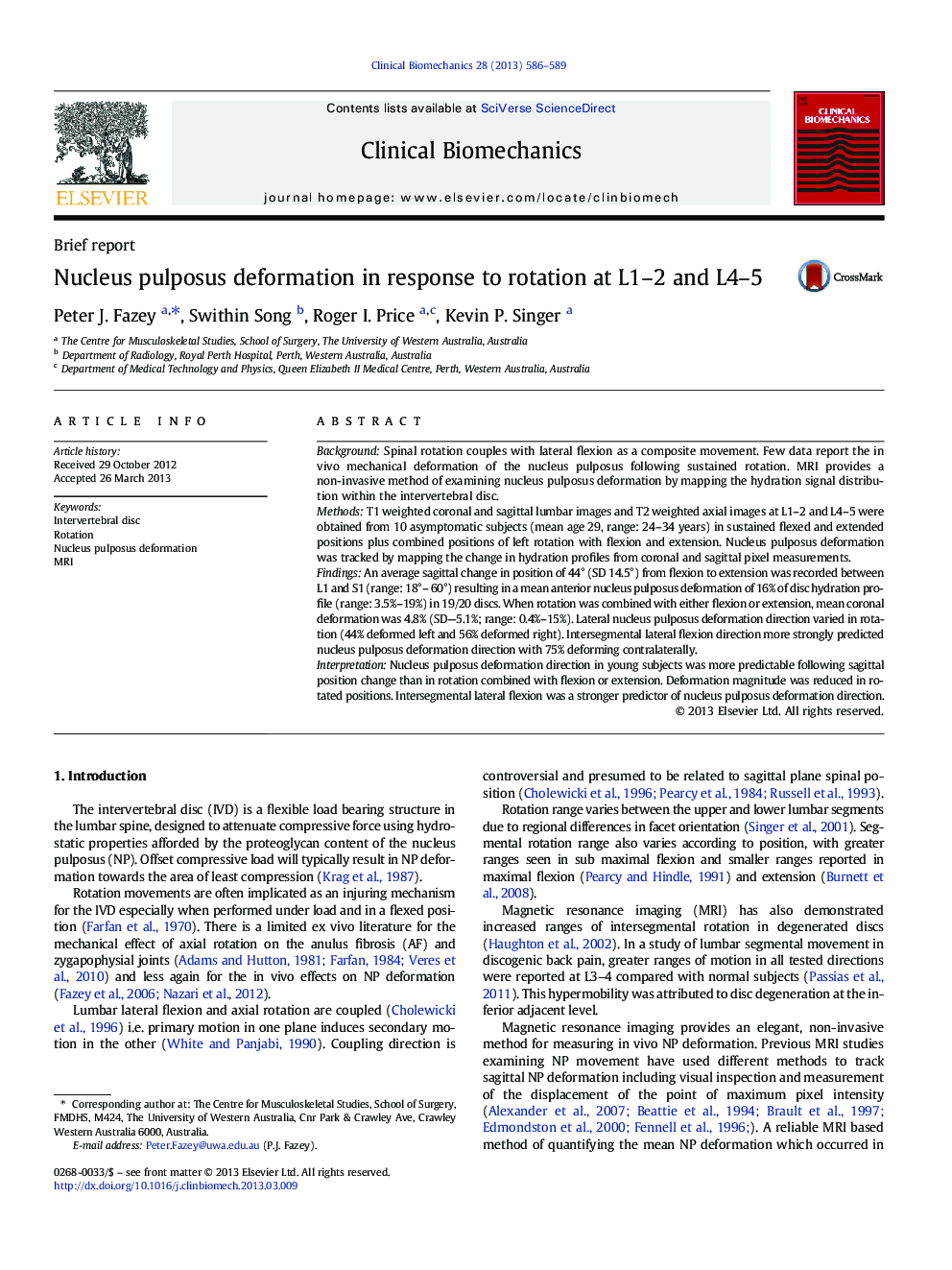| Article ID | Journal | Published Year | Pages | File Type |
|---|---|---|---|---|
| 4050709 | Clinical Biomechanics | 2013 | 4 Pages |
BackgroundSpinal rotation couples with lateral flexion as a composite movement. Few data report the in vivo mechanical deformation of the nucleus pulposus following sustained rotation. MRI provides a non-invasive method of examining nucleus pulposus deformation by mapping the hydration signal distribution within the intervertebral disc.MethodsT1 weighted coronal and sagittal lumbar images and T2 weighted axial images at L1–2 and L4–5 were obtained from 10 asymptomatic subjects (mean age 29, range: 24–34 years) in sustained flexed and extended positions plus combined positions of left rotation with flexion and extension. Nucleus pulposus deformation was tracked by mapping the change in hydration profiles from coronal and sagittal pixel measurements.FindingsAn average sagittal change in position of 44° (SD 14.5°) from flexion to extension was recorded between L1 and S1 (range: 18°– 60°) resulting in a mean anterior nucleus pulposus deformation of 16% of disc hydration profile (range: 3.5%–19%) in 19/20 discs. When rotation was combined with either flexion or extension, mean coronal deformation was 4.8% (SD—5.1%; range: 0.4%–15%). Lateral nucleus pulposus deformation direction varied in rotation (44% deformed left and 56% deformed right). Intersegmental lateral flexion direction more strongly predicted nucleus pulposus deformation direction with 75% deforming contralaterally.InterpretationNucleus pulposus deformation direction in young subjects was more predictable following sagittal position change than in rotation combined with flexion or extension. Deformation magnitude was reduced in rotated positions. Intersegmental lateral flexion was a stronger predictor of nucleus pulposus deformation direction.
